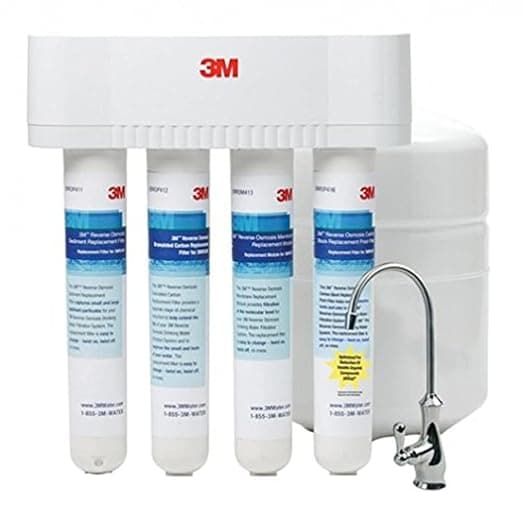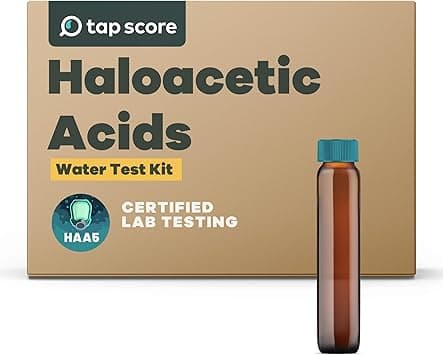Manor Tap Water Quality Report
Manor's water has 12 contaminants above EPA MCLGs. We recommend using a certified water filter.
Utility
MANOR WATER SYSTEM
People Served
74,856
MCL Violations
0
Last Updated
Feb 20, 2024
Is Manor Tap Water Safe to Drink?
Manor's water has 12 contaminants above EPA health-based guidelines. We strongly recommend using a certified water filter to reduce exposure to these contaminants. Check our filter recommendations below for NSF-certified options that can remove the specific contaminants found in Manor's water.
The data below shows test results from MANOR WATER SYSTEM, which serves 74,856 people in the Manor area. Water quality testing is conducted regularly and reported to the EPA. This report was last updated Feb 20, 2024.
Manor Water Quality Test Results
Key Water Quality Metrics
Contaminants Detected
⚠️ Contaminants Above EPA MCLG (12)
Lead
What is Lead?
Naturally occurring heavy metal commonly found in tap water
Health Effects
Health protective benchmarks for oral exposure to lead are based on delays in physical or mental development for children and infants, and impacts to the kidneys and high blood pressure for adults. Children are especially susceptible to the effects of lead. Even low levels of lead can damage the brain and nervous system, slow development, and lead to problems with learning, behavior, hearing, and speech. In adults, lead can lead to hypertension, reproductive problems, neurological disorders, decreased kidney function and muscle and joint pain. Exposure to lead can also cause anemia and impact the immune system for both children and adults. The EPA classifies lead as a probable human carcinogen.
Affected Organs
Common Sources
Bromodichloromethane
What is Bromodichloromethane?
Member of trihalomethanes (THMs) that form in water treated with chlorine
Health Effects
Health protective benchmarks for BDCM are based on carcinogenicity and liver toxicity observed in animal studies. The EPA has classified BDCM as a probable human carcinogen. Results from animal studies also suggest that kidney, immune system, spleen, and developmental toxicity are associated with exposure to BDCM. BDCM has been shown to produce DNA changes (genotoxicity) in laboratory studies.
Affected Organs
Common Sources
Bromoform
What is Bromoform?
Member of trihalomethanes (THMs) that form in water treated with chlorine
Health Effects
Health protective benchmarks for bromoform are based on liver, developmental, and carcinogenicity observed in animal studies. Results from animal studies also suggest that exposure to bromoform can also lead to liver, kidney, and developmental toxicity. Bromoform has also been shown to produce DNA changes (genotoxicity) in laboratory studies.
Affected Organs
Common Sources
Dichloroacetic Acid (DCA)
What is Dichloroacetic Acid (DCA)?
Member of haloacetic acids (HAAs) that form as byproducts when chlorine reacts with organic matter
Health Effects
Health protective benchmarks for DCA are based on evidence of increased cancer risk and liver toxicity observed in animal studies. Adverse effects to the male reproductive system have also been associated with elevated levels of DCA in animal studies. The EPA classifies DCA as a likely human carcinogen.
Affected Organs
Common Sources
Radium, combined (-226 & -228)
What is Radium, combined (-226 & -228)?
Radium is a naturally occurring radioactive metal that is part of the uranium decay series. It is found in trace amounts in soil, rock, and water. Radium is known for its radioactive properties and can emit alpha, beta, and gamma radiation. It is a heavy metal and can be harmful to human health when ingested or inhaled.
Health Effects
Exposure to radium can lead to serious health issues, including an increased risk of cancer, particularly bone cancer. It can also cause damage to the bone marrow and other organs. Long-term exposure may result in anemia, immune system suppression, and other health complications.
Affected Organs
Common Sources
Dibromoacetic Acid (DBA)
What is Dibromoacetic Acid (DBA)?
Member of haloacetic acids (HAAs) that form as byproducts when chlorine reacts with organic matter
Health Effects
Health protective benchmarks for DBA are based on carcinogenicity and liver toxicity observed in animal studies. The EPA has classified DBA as a probable human carcinogen. Results from animal studies also suggest that kidney, immune system, spleen and developmental toxicity are associated with exposure to BDCM. BDCM has been shown to produce DNA changes (genotoxicity) in laboratory studies.
Affected Organs
Common Sources
Dibromochloromethane
What is Dibromochloromethane?
Member of trihalomethanes (THMs) that form in water treated with chlorine
Health Effects
Health protective benchmarks for DBCM have been developed based on liver toxicity and carcinogenicity observed in animal studies. EPA has classified DBCM as a possible human carcinogen based on animal evidence, while IARC (International Agency for Research on Cancer) says it is unclassifiable as a human carcinogen. Kidney toxicity has also been associated with DBCM based on evidence from animal studies. DBCM has been shown to produce DNA changes (genotoxicity) in laboratory studies.
Affected Organs
Common Sources
Total THMs
What is Total THMs?
Group of contaminants that form in drinking water systems when a disinfectant, typically chlorine, reacts with organic matter
Health Effects
Drinking water standards for total THMs are based on evidence of carcinogenicity in human and animal studies, as well as liver and kidney toxicity observed in animal studies. Individual THMs have been further associated with developmental, immune, spleen, and genotoxicity.
Affected Organs
Common Sources
Chloroform
What is Chloroform?
Member of trihalomethanes (THMs) that form in water treated with chlorine and is generally the most abundant THM formed in drinking water
Health Effects
Health protective benchmarks for chloroform have been developed based on kidney and liver carcinogenicity observed in animal studies, and liver toxicity observed in occupational studies. The EPA classifies chloroform as a probable human carcinogen based on animal evidence, and there is additional epidemiological evidence that may increase the risk of colon and bladder cancer in humans. Results from animal studies also suggest that exposure to chloroform can cause liver, developmental and immune toxicity. Acute exposure to low levels of chloroform will cause nervous system toxicity.
Affected Organs
Common Sources
Lithium
What is Lithium?
Lithium is a soft, silvery-white metal that belongs to the alkali metal group. It is highly reactive and flammable, and must be stored in mineral oil. Lithium is used in batteries, mood-stabilizing drugs, and other applications.
Health Effects
Exposure to lithium can lead to a range of health effects, including nausea, diarrhea, tremors, and in severe cases, lithium toxicity can cause kidney damage and neurological issues.
Affected Organs
Common Sources
Boron
What is Boron?
Boron is an element that occurs naturally in the earth's crust as borate minerals. It can be found in food, consumer products and some water sources, including some bottled water and groundwater from highly mineralized aquifers. While evidence suggests it is likely an essential nutrient for human health, animal studies have shown that exposure to high levels of boron can cause adverse developmental and reproductive effects.
Health Effects
Health protective levels of boron in drinking water have been established based on potential developmental toxicity.
Affected Organs
Common Sources
Fluoride
What is Fluoride?
Naturally occurring mineral in the environment and an essential element of tooth enamel
Health Effects
Elevated levels of fluoride in drinking water can lead to dental fluorosis in children, which is the discoloration and molting away of tooth enamel. Evidence on low-dose, chronic exposure to fluoride is not definitive but has been indicated as having potential neurological impacts. Studies have clearly established that long-term exposure to high doses of fluoride, higher than typically found in US drinking water, can have adverse effects on skeletal tissue (bones and teeth), which may cause higher risk of bone fractures in seniors. Skeletal fluorosis is a debilitating condition caused by high fluoride exposure during bone development in children.
Affected Organs
Common Sources
Understanding the Data
This data comes from your local water utility testing. The bar charts compare detected levels against EPA's Maximum Contaminant Level Goal (MCLG). Contaminants above the MCLG are shown by default and may require filtration. All other tested contaminants are within safe levels and can be viewed by expanding the section above.
Recommended Water Filters for Manor
Based on Manor's water quality data, these NSF-certified filters are recommended to remove contaminants above EPA MCLGs.

Solventum Purification Inc.
3MRO401
NSF Certified:
Daily Production
11.48 gpd
Removes 15 contaminants:
Arsenic, Barium, Cadmium, Chromium (Total), Chromium (VI) +10 more

Solventum Purification Inc.
3MRO301
NSF Certified:
Daily Production
11.48 gpd
Removes 15 contaminants:
Arsenic, Barium, Cadmium, Chromium (Total), Chromium (VI) +10 more

iSpring Water Systems LLC
RCC7-BLK
NSF Certified:
Daily Production
25.41 gpd
Removes 9 contaminants:
Asbestos, Barium, Cadmium, Chromium (Total), Copper +4 more

iSpring Water Systems LLC
RCC7AK-BLK
NSF Certified:
Daily Production
25.41 gpd
Removes 9 contaminants:
Asbestos, Barium, Cadmium, Chromium (Total), Copper +4 more
Verify Your Water Quality with Independent Testing
With 12 contaminants above EPA health guidelines, independent laboratory testing provides a second opinion and can track changes over time.

SimpleLab
Advanced Home Water Test
$369
Most comprehensive home water test including all standard tests plus additional parameters for ultimate peace of mind.

SimpleLab
Standard Home Water Test
$232
Comprehensive water analysis testing over 200 contaminants including bacteria, heavy metals, and chemical compounds.

Tap Score
Haloacetic Acids (HAA9) Test
$275
Tests for disinfection byproducts formed when chlorine reacts with organic matter in water treatment.
Frequently Asked Questions About Manor Tap Water
Manor's water has 12 contaminants above EPA MCLGs. We strongly recommend using a certified water filter to reduce exposure to these contaminants. Check our filter recommendations below for NSF-certified options that can remove the specific contaminants found in Manor's water.